Fog still lies over the Shire highlands of Thyolo when the first tea pickers arrive in front of the tea factory of Satemwa Estate. The tea plantation is located at an altitude of 1,200 meters. The dense rows of tea bushes make the hilly landscape look like a soft green cushion. Sporadically, shady trees stand in the fields. Malawi was the first country in Africa where tea was grown commercially. The oldest tea fields at the foot of Thyolo Mountain were established in 1923. Almost as old is the former home of the company founder Maclean Kay. It is set in a beautiful garden with mature trees and expansive lawns. Huntingdon Lodge is a well-preserved colonial building, the likes of which are rarely found in Malawi today. Huntingdon Lodge has been hosting guests from all over the world for a long time. There are five rooms, an excellent kitchen, and a shaded veranda around the house overlooking the old garden. The heart of the plantation, the tea factory, is within walking distance. A guided tour of the tea plantation and a visit to the tea factory with a tasting of Satemwa’s top teas from white, green, oolong, black to fusion teas is a must. In this rapt and beautiful place, you learn a lot about the art of tea making and in the end you know one thing for sure: life is too short for a bad cup of tea.
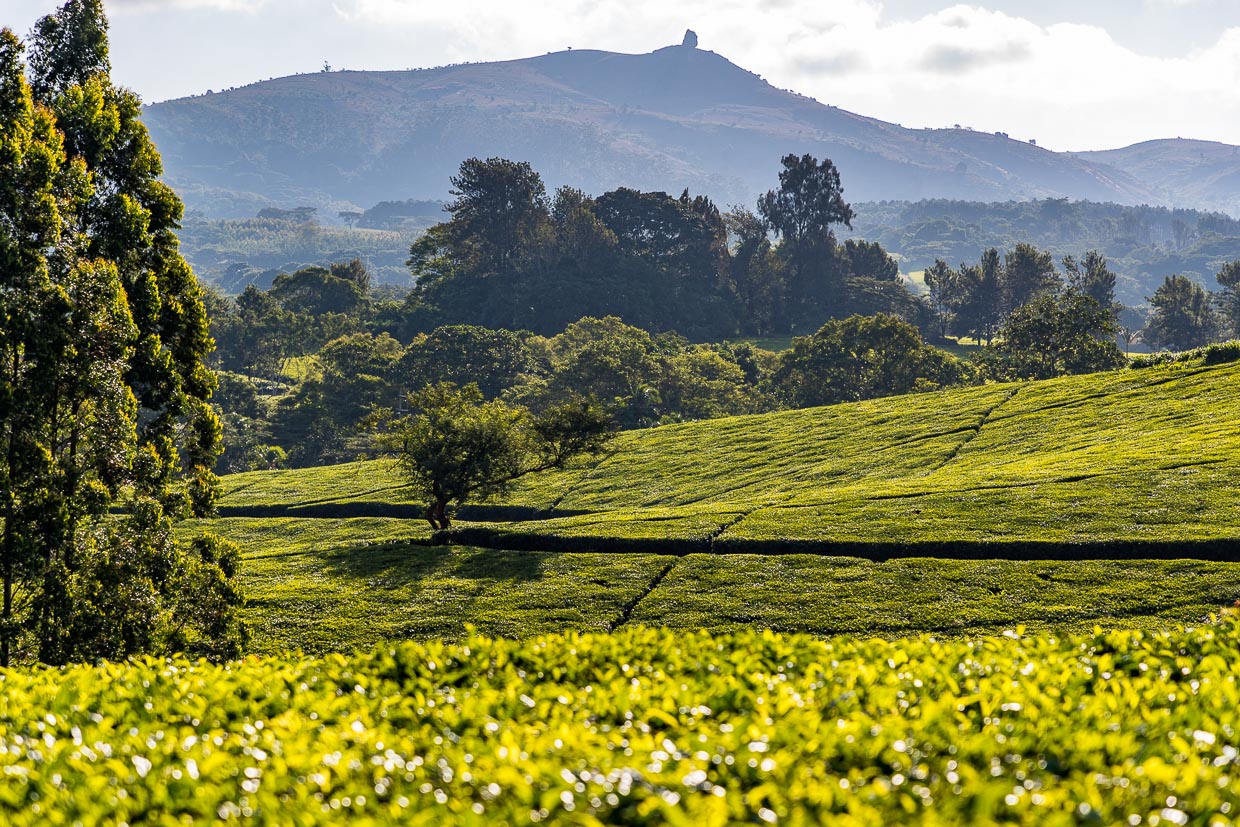
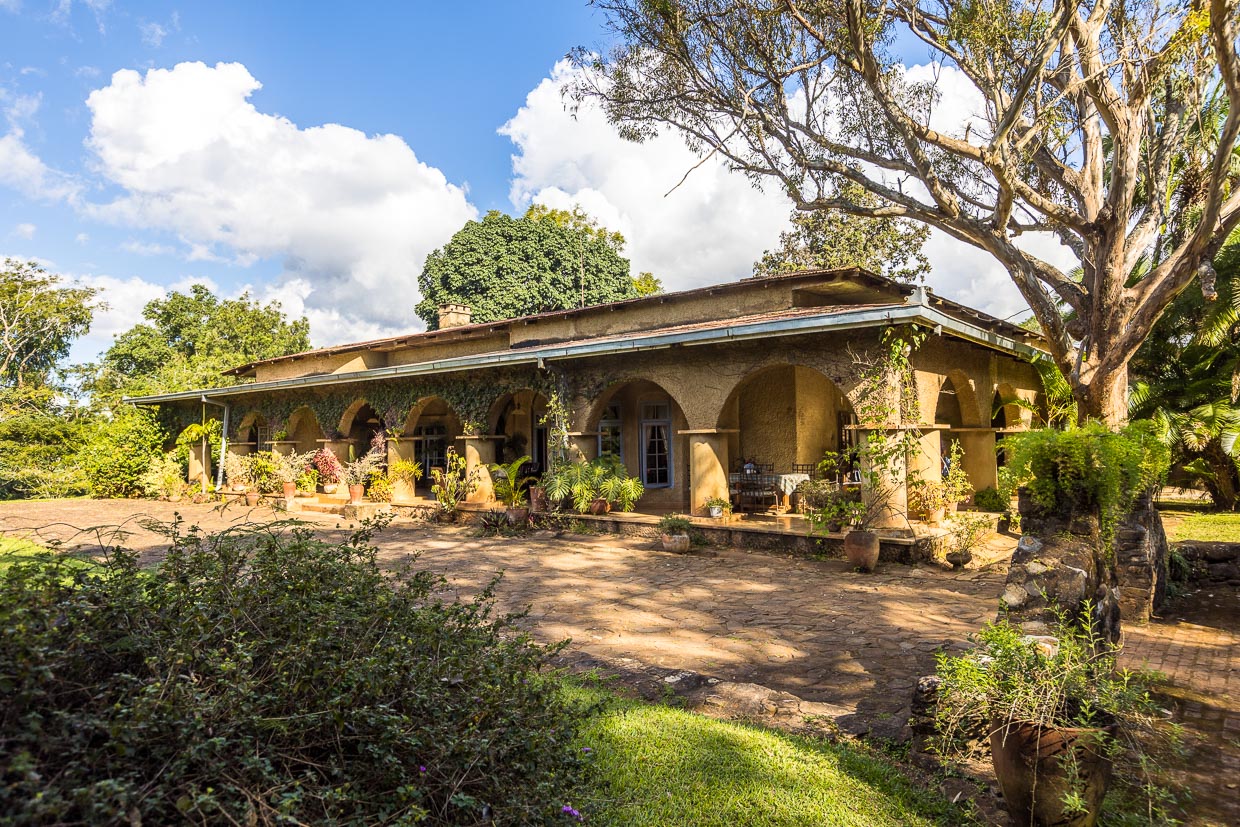
Tea harvest on Satemwa Estate
The main tea harvesting season in Malawi is from December to May. Satemwa Estate comprises 900 hectares of tea plantations. During the main season, the plants grow faster and are harvested every seven days. During the off-season, fresh tea leaves are harvested every ten days. It takes ten years for a tea bush to be ready for harvesting. During this time, it is grown to a kind of table. This is a good height for the tea pickers to pluck the fresh tea leaves with scissors or their hands and throw them into their panniers, which they carry on their backs. The oldest tea bushes on Satemwa date back to 1926, and the harvest of these tea bushes is always processed separately from the others. This is because the older a tea bush is, the more complex the flavors that can be created during further processing. The plants once planted by company founder Maclean Kay are now used to produce premium oolong tea. The tea is picked and processed in the early, sunny morning hours. Immediately after harvest, the leaves are left to wilt in the sun so that a strong aroma can develop later.
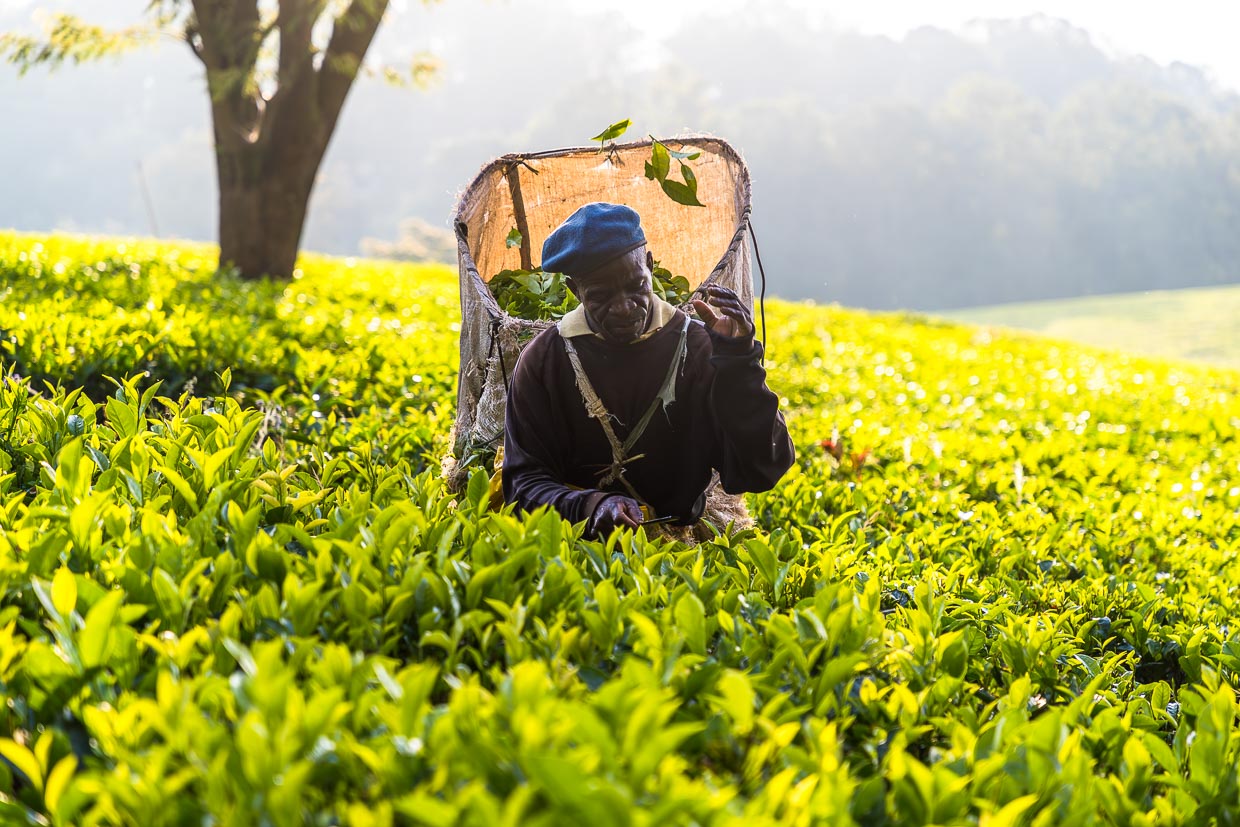
A gang in the tea field
During the peak season, more than 2,000 people are employed at Satemwa Estate. The top teas are harvested every seven days. The tea pickers are selective and harvest only the smallest leaves. A group of tea pickers, women and men, forms a so-called gang. They are paid by weight. At this stage, 1.5 tea pickers work on one hectare of tea field. They wear sturdy rubber aprons to protect them from the rough branches of the tea bushes. They unload their harvest at collection points, which is transported to the factory for further processing a short time later. There is a lot of activity on the paths around the tea factory. Tea pickers are making their way to their assigned harvest fields, small tractors are transporting the fresh harvest, workers are hauling building materials, children are on their way to school, and some women are setting up snacks in front of the factory gate to sell to the workers. Everyone seems to know what to do.
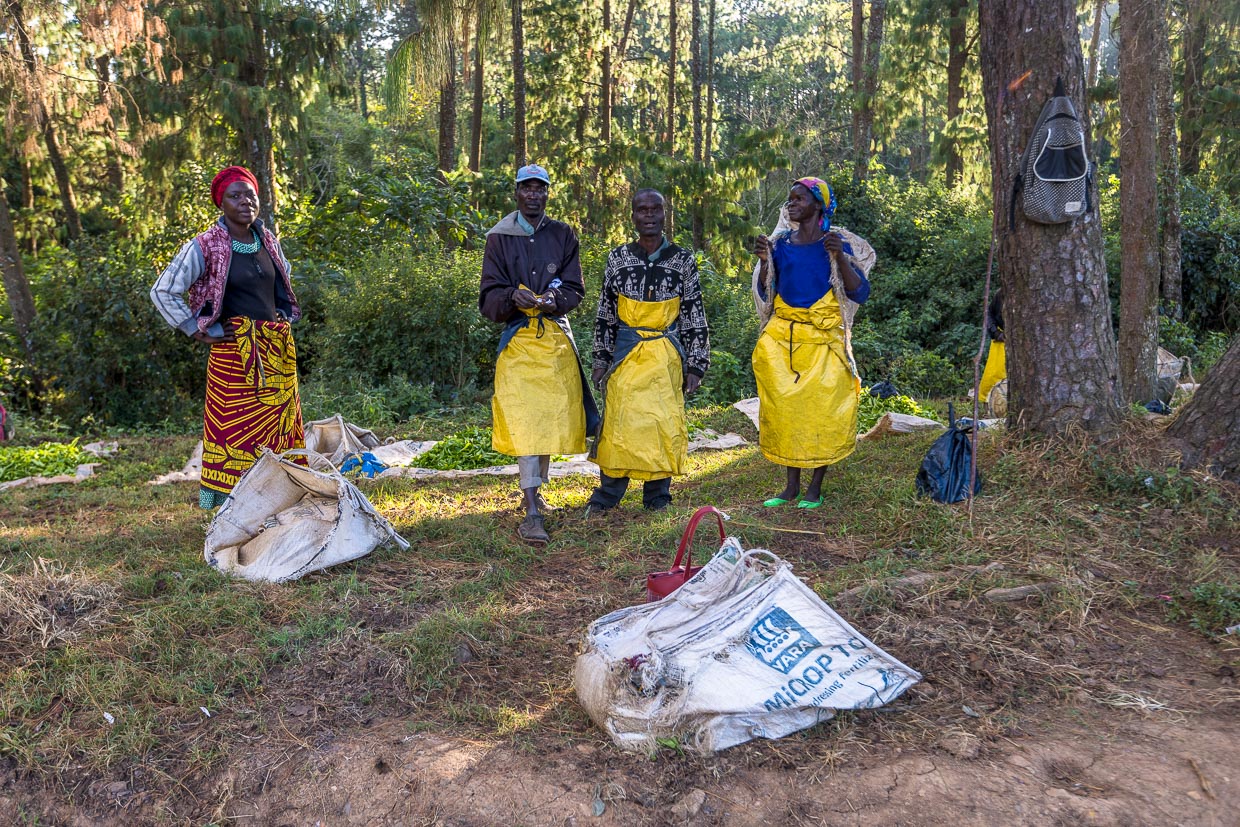
Advancement of women at Satemwa
Early on, company founder Maclean Kay recognized that it made social and economic sense to promote women. At Satemwa, as Human Resources Manager Fadson Mandala recounts, there was equal pay for men and women from the very beginning. Early on, Kay also introduced scissors plucking, the practice of picking tea leaves with scissors. He recognized that women were particularly skilled at this. Coffee harvesting on Satemwa is done almost exclusively by women. They are better at identifying and harvesting the perfect red coffee cherry. Women are more selective and more sensitive to color than men, creating the basis for a particularly high quality harvest. Women are also encouraged in management at Satemwa. They also work at Satemwa Estate as quality and production managers. Satemwa Estate is more than a tea factory with surrounding tea fields. It is a cosmos in itself with schools, a health clinic, a commercial kitchen for the workers’ midday meals, continuing education programs and a church. Many of the employees have permanent jobs, and there is a pension fund for their retirement. Satemwa Estate committed itself to the United Nations Millennium Development Goals many years ago. The goals of sustainability, the promotion of global partnerships and equal rights for women are at the forefront.
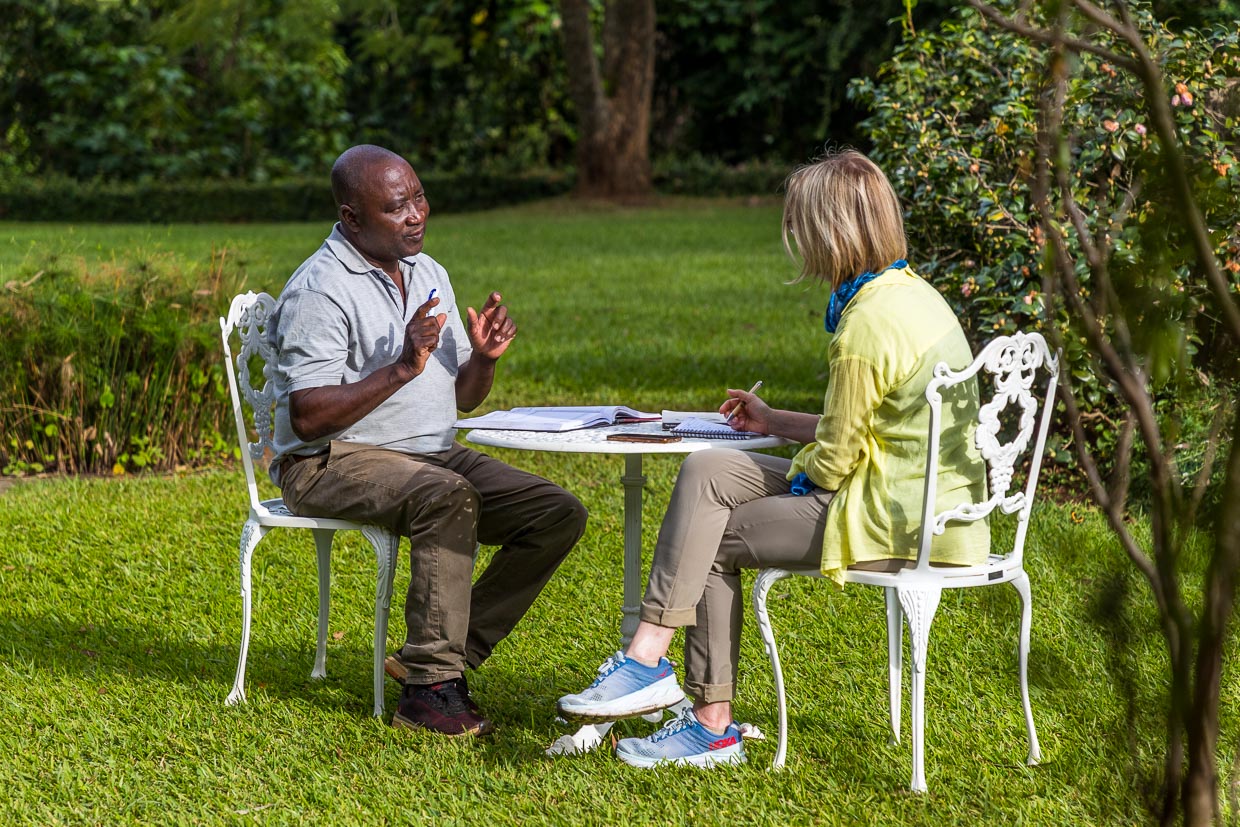
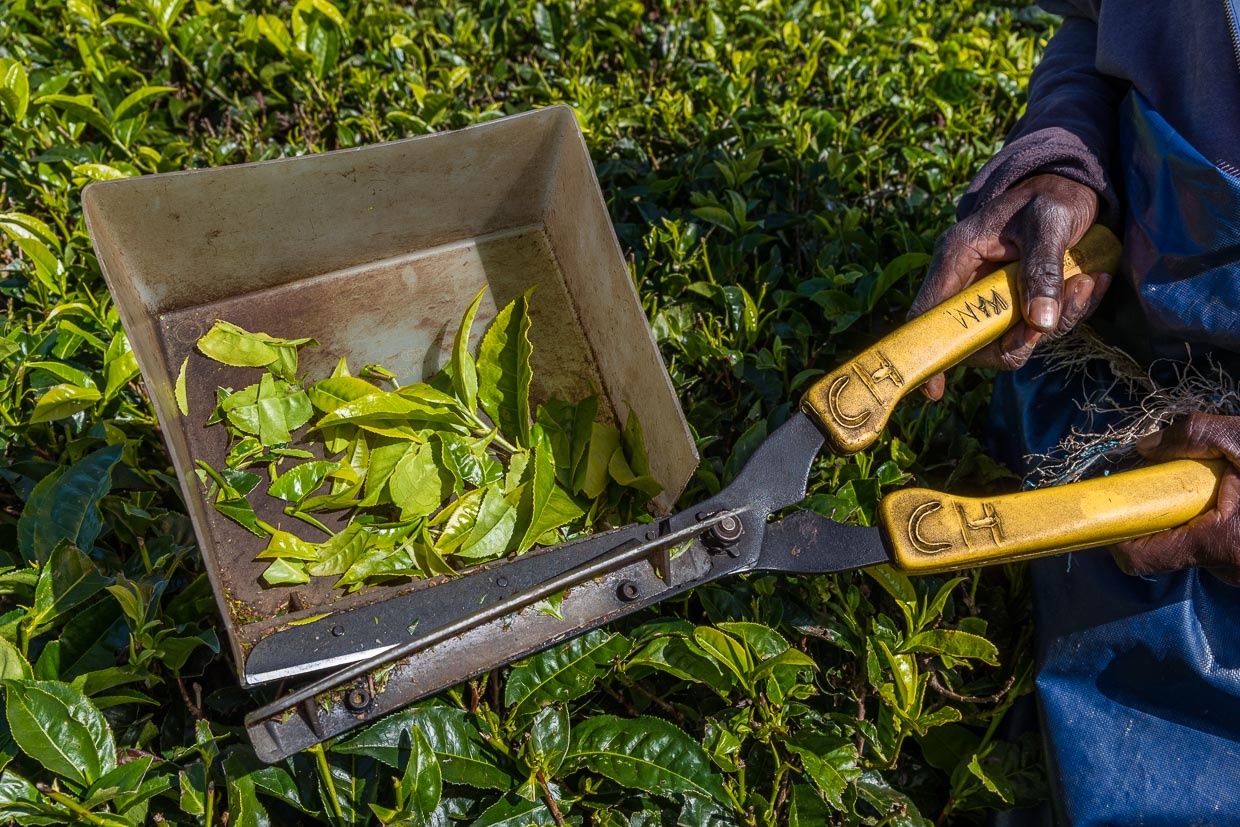
The emergence of the tea varieties
The contrast could hardly be greater. Idyllic fields with decorative shade trees surround the tea factory. The production hall, on the other hand, is dark and noisy. Various machines and conveyor belts process the day’s harvest and ensure that the moisture content in the tea leaves drops in the first steps of the process. In addition to the many top teas and variations, Satemwa also produces for large customers who fill the tea into tea bags. The tea for this tea bag standard initially has a moisture content of 40 percent. At the end of the process, a residual moisture of 3 to 4 percent remains.
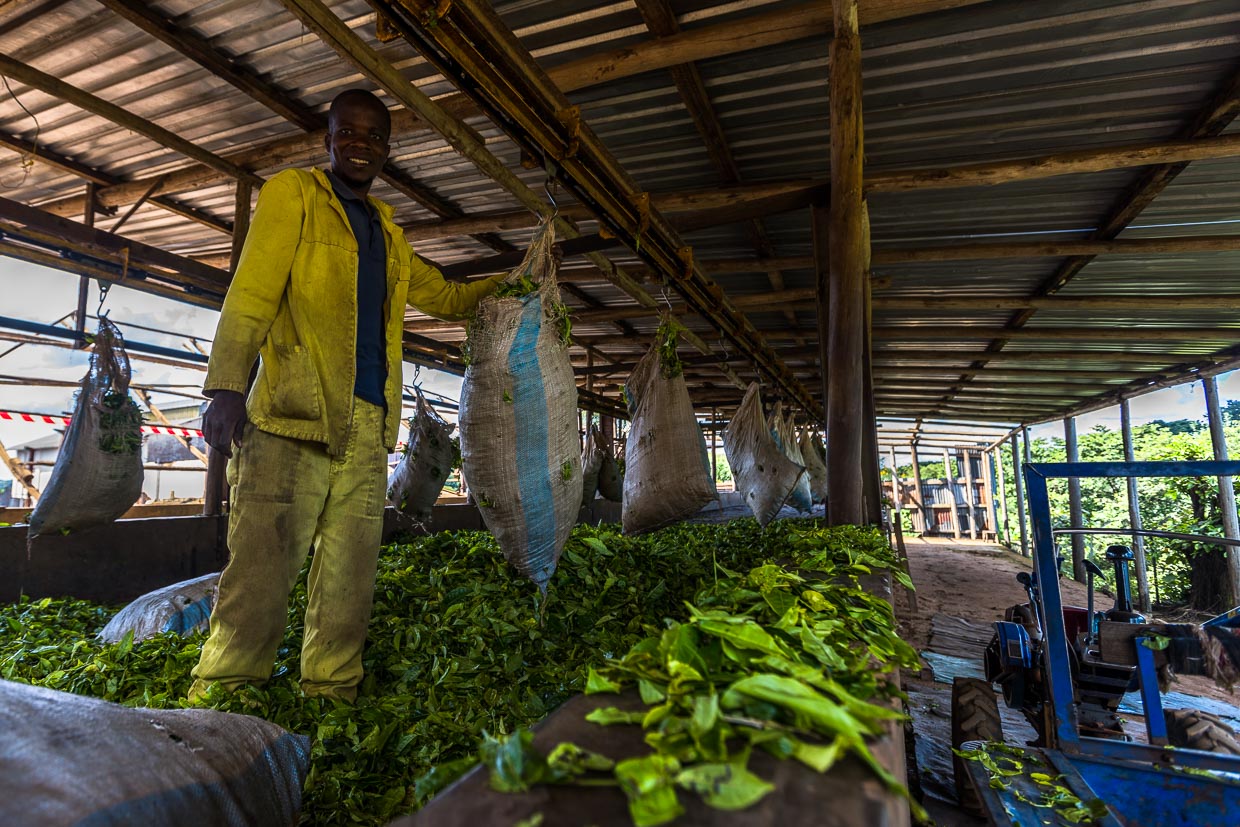
Minute variations in the process determine what type of tea is produced from a particular bush: white, green, red, black, oolong or dark tea. Some varieties are suitable for only one or two types of tea, while others are more flexible. The tea master can produce not only different types of tea, but also different styles within those varieties.
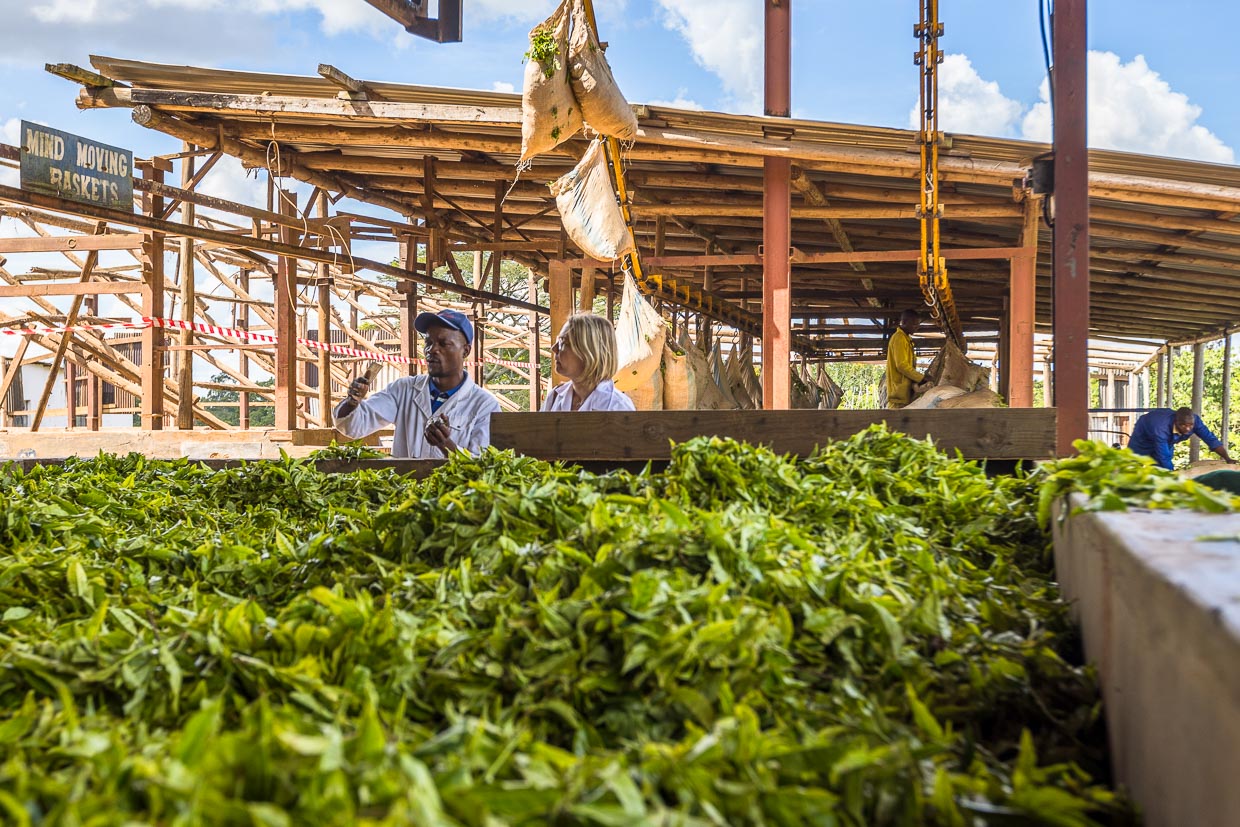
In the production of green tea, the tea producer chooses minimal processing and treatment. In the process, steaming or roasting the tea results in very different flavor profiles. At the other end of the scale are black teas. They undergo much more intensive processing, ranging from withering, rolling and cutting to oxidation, drying and sorting.
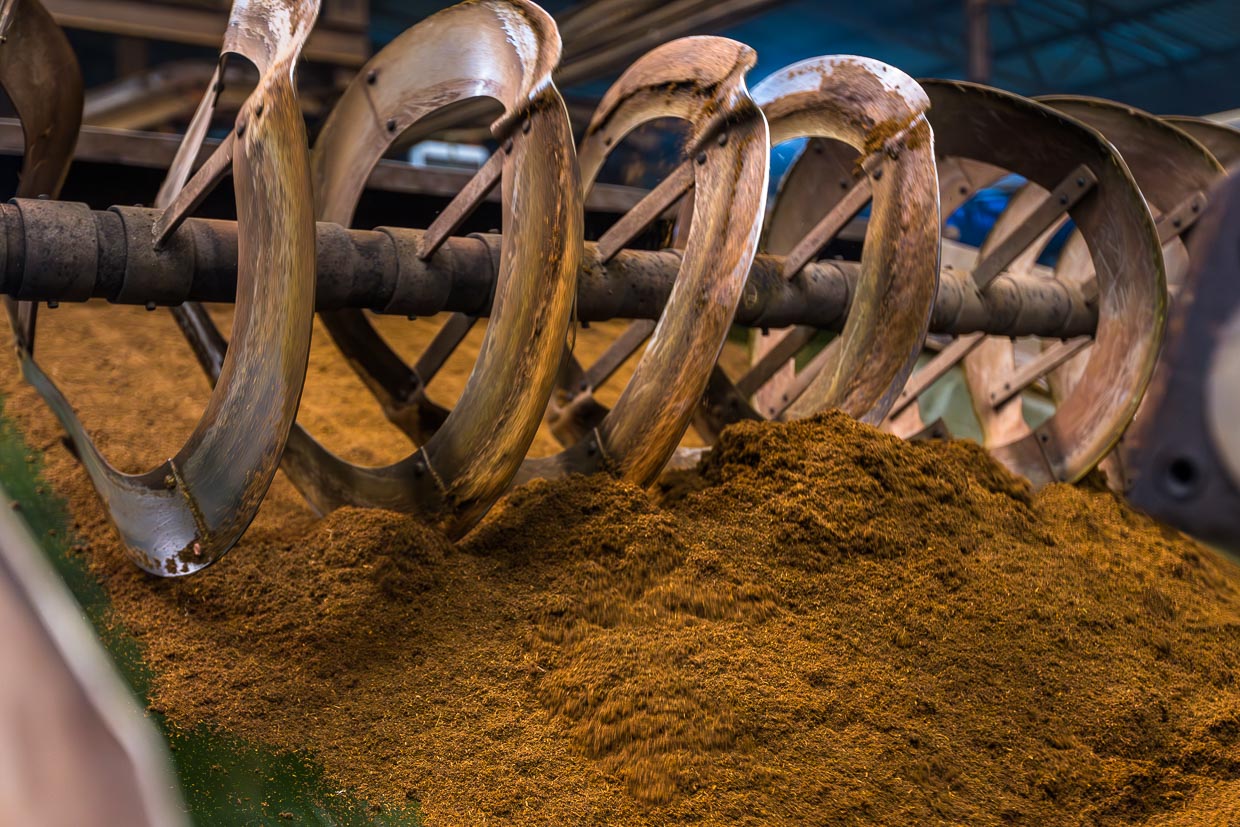
In the tea factory
During processing, the color of the tea changes. The green leaf becomes dark green, brown or black, depending on the degree of oxidation. At Satemwa, 27 different types of tea are produced. Often it is only nuances that influence the taste. How long is it dried, in the sun or in the shade, how long and to what temperature are the leaves heated, how finely are the leaves cut, how much residual moisture remains, are they rolled by hand or crushed with a cutting machine? The teas range from black tea for the tea bags of the big players in the global tea business to tea crus such as the hand-rolled Zomba Pearls, an aromatic oolong tea from the best plantation sites.
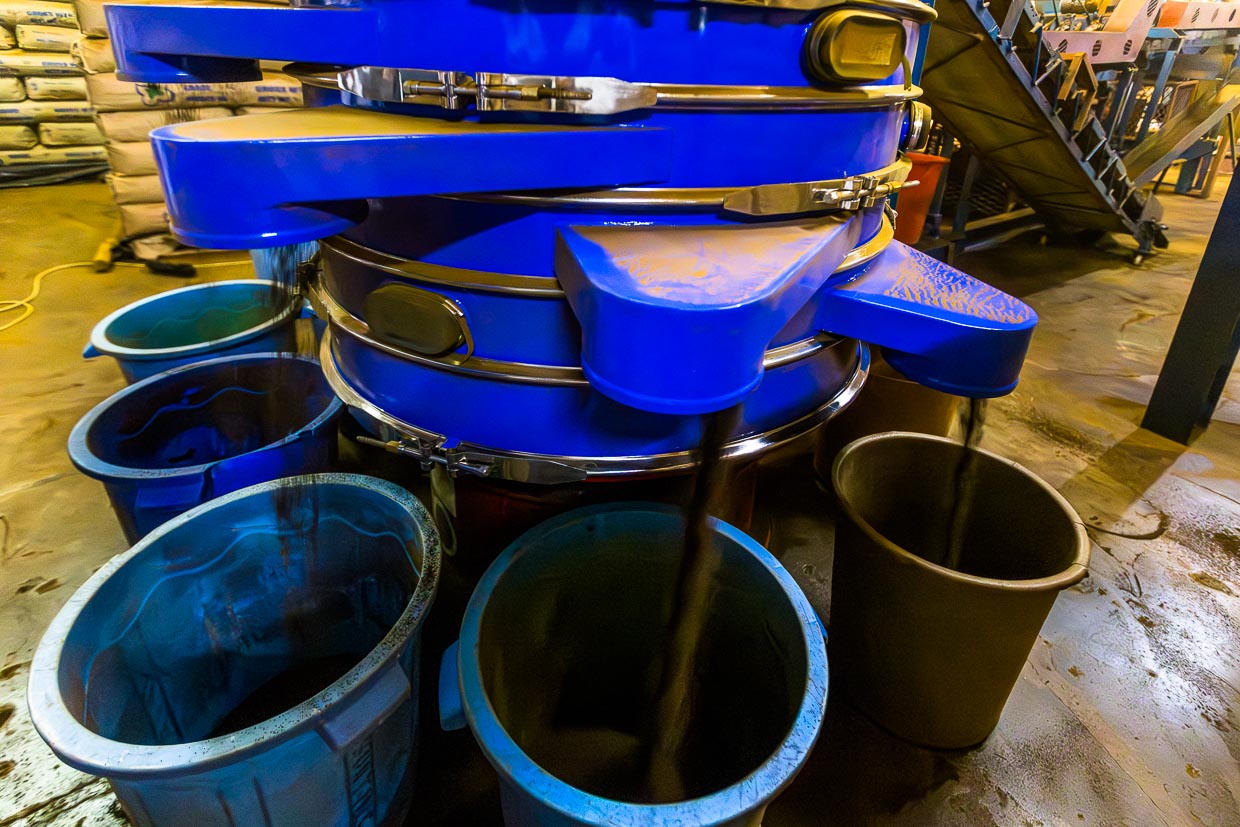
To the Tea Tasting in the White Room
After a long process from the selection of the tea plants, the care of the plants in the tea gardens, the plucking to the processing and sorting of the dried tea comes the very last quality test in the White Room on Satemwa: the taste test. Every morning, production manager Chisomo Custom and his colleagues check the latest harvest for first-class quality. This is a fixed ritual that guests at Huntingdon Lodge can also experience at the Tea Tasting in the White Room of the factory.
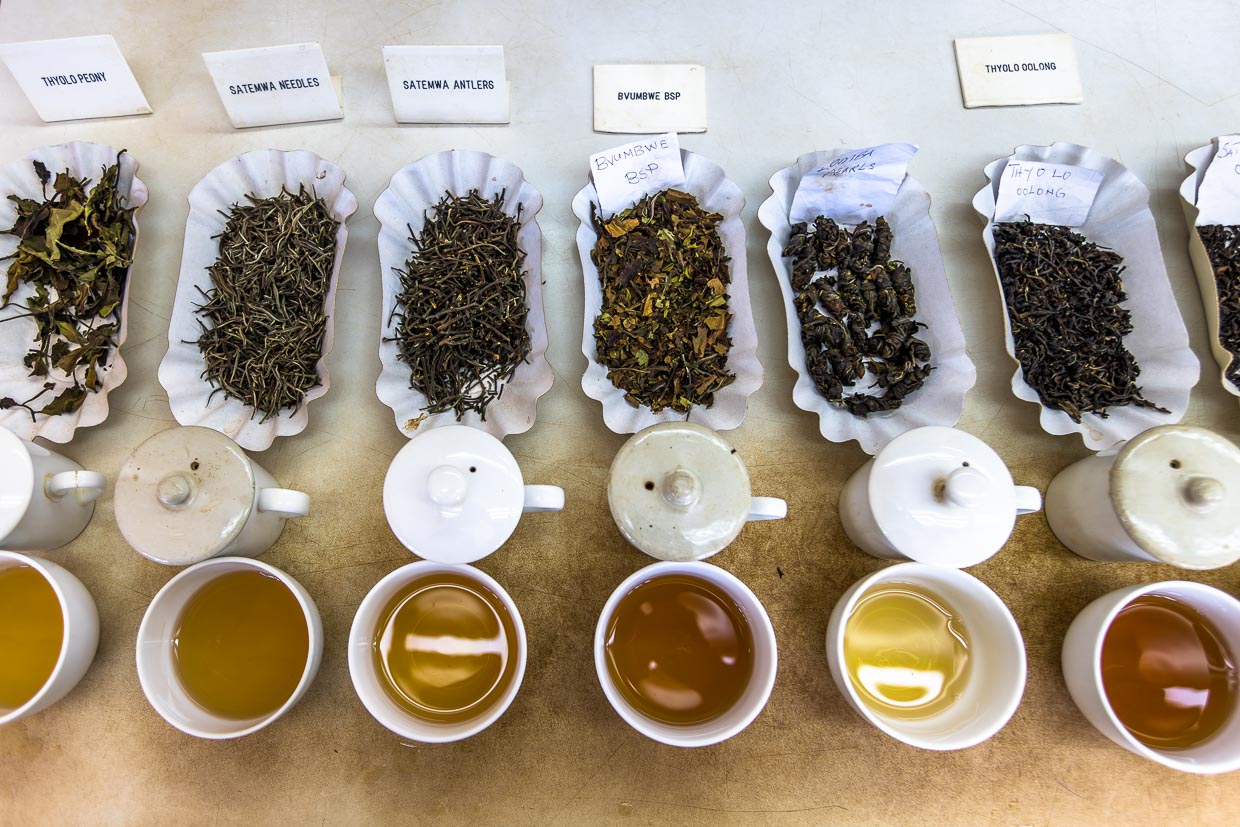
Alex Kay is the driving force behind numerous experiments with different varieties, unconventional processing techniques, fermentation experiments and smoked tea. Tea from Africa is associated by many, including tea connoisseurs, only with standard qualities for tea bags. At Thyolo Mountain on Satemwa, however, the potential of the terroir is exploited and tea of the highest quality is produced.
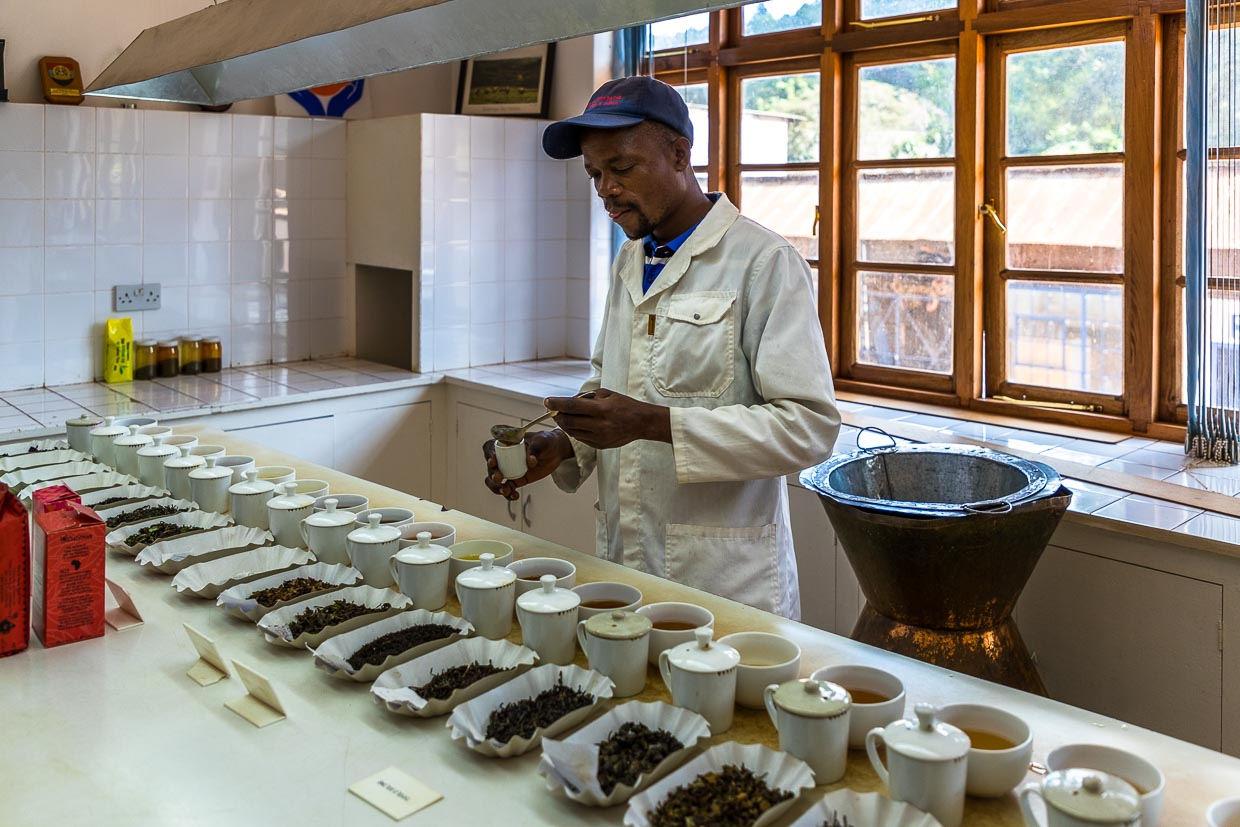
A reference sample is taken from each batch of tea that leaves the tea factory in large bags at Satemwa. This reference tea is sealed in tins, labeled and placed on a large shelf. If there are any complaints, the sample can prove whether a quality defect already existed in the factory or only arose in transit or at the major customer. In this administrative room, the production manager Custom goes on to explain to us, food and perfume on the skin are prohibited. No foreign odor is allowed to affect the aroma of the tea.
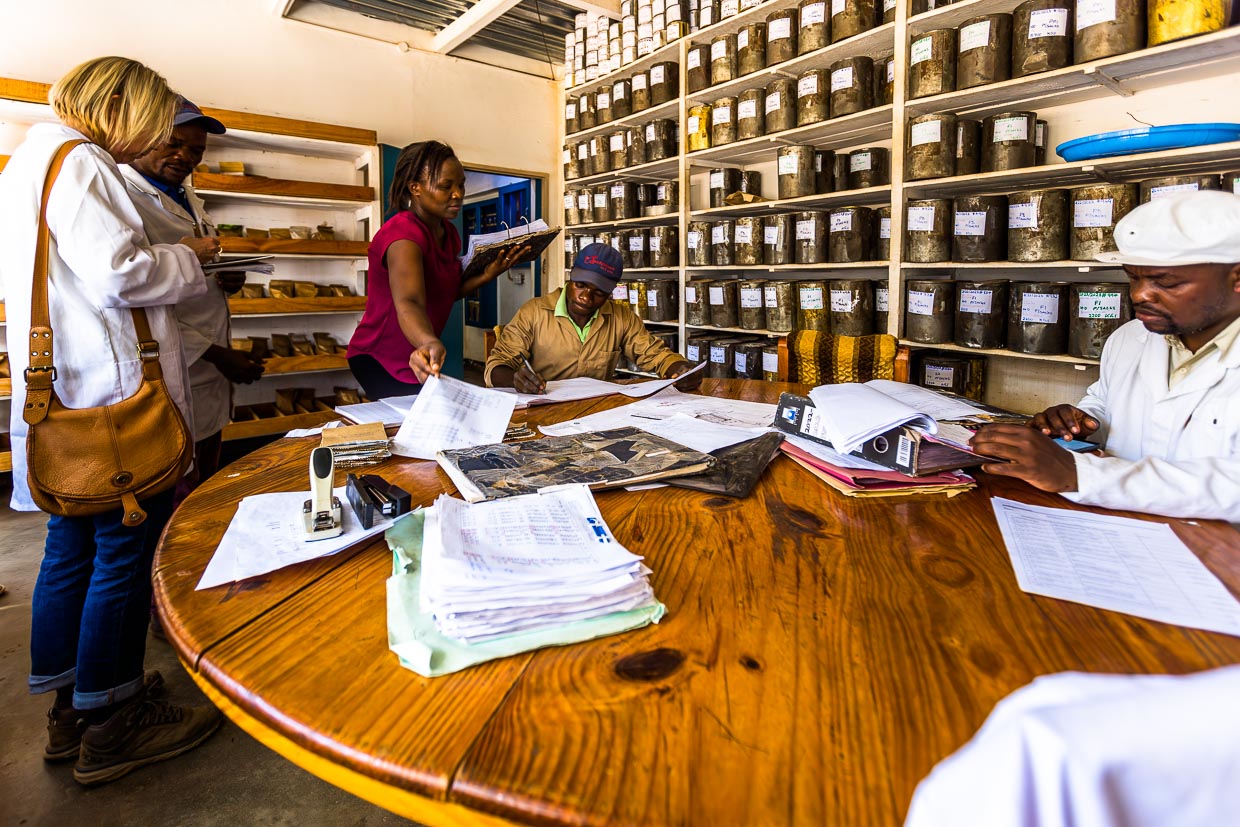
Family tradition
Satemwa Estate is now run by the third generation of the Kay family and is one of the last independent farms in Malawi not owned or managed by an agricultural corporation. Satemwa Estate is now managed by Alex Kay. His father, Chip Kay, was the son of the company’s founder. He used to always add some lemon verbena to his many cups of black tea. From this daily ritual came the idea to develop flavored teas as well. Of course, with the herbs and flowers that grow on Satemwa Estate. So today the assortment also includes White Hibiscus, Black Peach and of course black tea with Lemon Verbena. Satemwa’s top teas are also available in specialized tea shops in Europe. More about the history of Satemwa Estate and Huntingdon Lodge on the company homepage. But a glimpse into Chip Kay’s former nursery is already here. It is quite a charming room with a round bay window and its own terrace facing the garden.
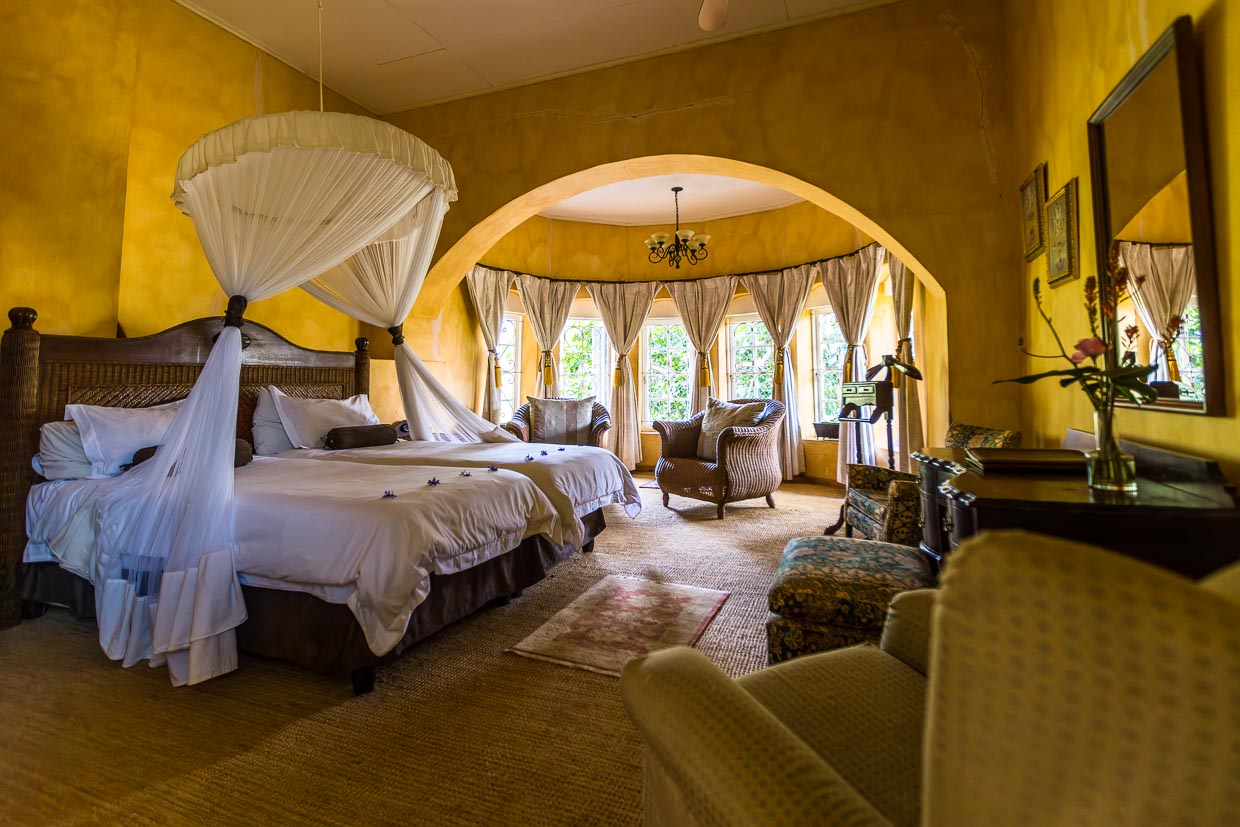
An overview of all the stories about Malawi can be found on the country page Malawi. The landlocked country in Southeast Africa, which is also called the Warm Heart of Africa, is still considered an insider tip for Africa travelers. In regional comparison Malawi is a safe and peaceful country. The country’s landscape is dominated by Lake Malawi, the tenth largest lake in the world. In the total of five national parks, successful wildlife management has been practiced for several years and the biodiversity has increased enormously. Liwonde National Park and Majete Wildlife Reserve have been under the management of African Parks for 20 years. Thawale Lodge offers accommodation in the middle of the park. Nevertheless, the population of Malawi suffers from poverty. A controlled growth of tourism creates income opportunities in rural areas and improves the livelihood of families. The sustainable cultivation of tea and coffee, as on Satemwa Estate, or the reconstruction of banana farming in the country, also create important jobs. More information about tourism in Malawi.
The research trip was supported in Malawi by the Ministry of Tourism

